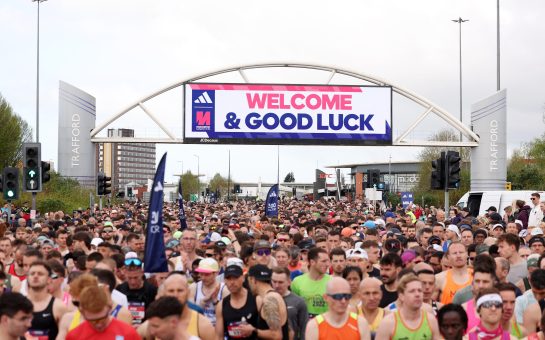Two things happened last week to make me feel every bit of my 46 years, firstly a 21-year-old colleague told me I was older than her dad, which was pretty painful to hear.
And secondly I was asked to interview Ben Kelly, the man who designed the Hacienda (or FAC251 Hacienda to give it its Sunday name).
I suddenly realised that it was 30 years since my first trip to that iconic and somewhat infamous club.
It was 1983 and I’d been persuaded to pay a rare trip to Manchester on the promise of seeing The Smiths at a club I’d never heard of in a part of town I’d never been to.
To be honest I can’t say I knew or really cared who did the design as I sank the first of too many pints that night. Who does at any age, let alone at 16?
I was however struck, even then, by the remarkable interior – it just seemed right albeit a bit mad at first glance.
The stark urban and industrial nature of the décor was completely in tune with the building and its surrounding and the blue and grey colours seemed to harmonise the whole thing. It looked like it shouldn’t work but it did.
The Hacienda came to be known as a place to play hard and that’s exactly what the design reflected.
It revelled in the industrial heritage of a hard-working building in a hard-working city – Manchester.
Ben Kelly was in town recently to launch his latest project, the design for a new music school a stone’s throw from the site of the now defunct club.
I spotted him before I was introduced due to his orange trainer – a flash of the creative which most people wouldn’t think of but which is a designer’s stock-in-trade.
We chatted in a booth while the band rehearsed for the music school’s open evening that day.
Obviously keen to talk about his new project but also mindful of his strong links with the Manchester music scene, Ben revealed:
“This project [the BIMM music school] is part of the continuing development of my designs and there’s something nice about it being a music-based project.
“It’s been a while and it’s nice that it’s another stepping stone and it’s nice to have been asked to come back and do some more work to continue that musical legacy.
“It’s a very different atmosphere and scene now from what it was before and I do take some satisfaction from that change.
“I viewed Factory as unpaid social workers and they went where others feared to tread.
“They laid that path, it was an extraordinary thing and I feel quite privileged to have been a part of that.
“It has been said that the Hacienda was the starting point of the regeneration of Manchester – even the City Council agreed with that eventually.”
As someone who grew up in Manchester in the 70s and 80s I can certainly attest to that.
Ben, whose designs in Manchester include the Factory Records building, FAC 251 and the Dry Bar, was the obvious choice for this project because of his reputation for iconic designs and his links to the Manchester music scene.
When asked how he viewed the role of his designs in the reinvention of Manchester into the city we have all come to know and love he was reflective.
He said: “When I first came to Manchester in 1981 to start talking about those projects it was a different place and a different world.
“When we finished those projects I didn’t come here for about 10 years and coming back I thought I’d got off the train at the wrong place.
“My description of it is that before everything was in black and white and then someone had flicked a switch and it had all gone into colour.
“Nick Johnson from Urban Splash came to see me some years ago and he said that Urban Splash wouldn’t have come into existence if Factory and the people that they’d worked with hadn’t done what they’d done and that is a big compliment.
“To be asked to come back is a really great.”
When I drove home later that evening I deliberately drove past the site of the Hacienda.
It’s an apartment block now, and although it looks great there’s a big part of me that’s sad at the loss of something which defined a city for a decade and more.
It was a massive influence on a whole generation of people who visited the club or listened to the music inspired by it.
The impact of the design as a symbol of the regeneration of Manchester should not be understated and in continuing his odyssey with the Manchester music scene Ben Kelly is reconnecting with what he achieved as part of that revolution.
For more on this story and many others, follow Mancunian Matters on Twitter and Facebook.



